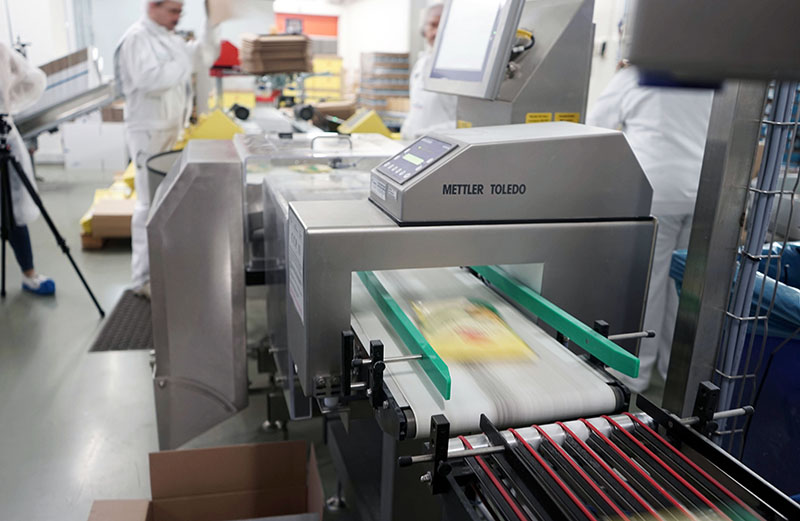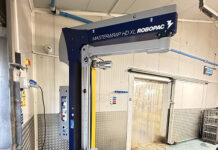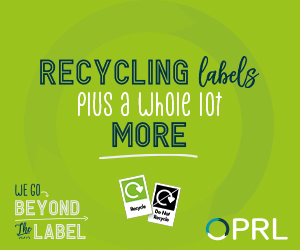By Kati Hope, global key account manager, Mettler-Toledo Product Inspection
METAL detection is a critical technology in food production, designed to identify and remove unwanted metal contaminants that can enter at any stage, from raw ingredients through to finished goods. Metal detection not only helps prevent contamination and costly recalls but also supports compliance with global food safety standards, boosts productivity and combats rising operational costs. This article breaks down the basics of metal detection, explaining how it works, why it’s important, and how manufacturers can use it to improve their operations and protect both their products and brands.
What is metal detection in food production?
Metal detection in food production is the process of identifying metal contaminants in food products. The goal is to find and remove these particles before the product reaches consumers. Metal can come from many sources, such as broken machinery, within raw materials or even personal items like jewellery.
Metal detectors work by creating a magnetic field. When a product passes through the metal detector, any metal present in the product disturbs the magnetic field, which is detected by the system. Once the system identifies a metal contaminant, the product is typically rejected or flagged for further inspection.
Why should food manufacturers install a metal detection system?
Metal is widely considered to be the most common type of physical contaminant found in the production process. Installing a metal detection system offers several advantages to food manufacturers:
- Consumer protection: Metal contaminants in food can be harmful. Even tiny fragments can cause injuries if eaten, leading to health risks and legal actions against the company.
- Regulatory compliance: Food safety standards require manufacturers to implement checks for contamination. Metal detectors help meet these requirements, reducing the chance of regulatory fines.
- Cost control: Catching metal early in the production process can prevent expensive machinery damage and production downtime. It also avoids the financial impact of product recalls.
- Brand protection: Preventing contamination means the brand’s reputation remains intact by avoiding the potential negative publicity and consumer distrust that can arise from recalls or safety issues.
How does metal detection work?
Metal detection systems operate based on electromagnetic principles. Here’s a simple breakdown of how they work:
- Transmitter coil: This part of the detector creates a magnetic field that surrounds the product as it passes through the machine.
- Receiver coils: The receiver coils detect any disruptions in the magnetic field. When metal is present, it alters the magnetic field, and this change is detected by the system.
- Response system: Once metal is detected, the system signals an alarm or triggers an automatic rejection mechanism that removes the contaminated product from the line.
Modern metal detection systems are highly adaptable, making them suitable for inspecting a wide range of product types and packaging formats. These systems are designed to work effectively with everything from loose raw materials like grains and powders to finished, packaged products like snacks or ready meals.
One of the key advancements in these systems is the use of intelligent algorithms and advanced filtering technologies. Algorithms, in combination with multi-simultaneous frequency inspection allow the metal detector to be finely tuned for different types of products, helping to differentiate between actual contaminants and natural product characteristics (like moisture or salt content) that might otherwise trigger false detections due to product effect. This reduces the likelihood of falsely rejecting a product that doesn’t actually contain metal, improving overall accuracy and reducing waste.
What types of metal contaminants can be detected by a metal detection system?
Metal detection systems are capable of identifying three main types of metal contaminants:
- Ferrous metals: These metals, like iron and steel, are magnetic and conduct electricity well, making them the easiest to detect.
- Non-ferrous metals: Includes metals like aluminium and copper, which are non-magnetic but still conduct electricity.
- Stainless steel: Stainless steel, particularly non-magnetic grades, can be harder to detect but can still be identified by advanced metal detection systems. Stainless steel is commonly used in food processing equipment, so detecting small pieces of it is critical.
Each type of metal affects the magnetic field in a different way, which is why detection systems need to be carefully calibrated depending on the type of contamination most likely to occur.
What types of food products can metal detection inspect?
Metal detectors can inspect a wide range of food products at different stages of production:
- Raw materials: Ingredients like flour, meat, and vegetables can be inspected for contaminants before they enter the production process.
- In-process products: These are items in the middle of being produced, like dough or blended mixtures. Checking them at this stage helps catch metal before it’s broken down into smaller pieces, which would make it harder to detect later.
- Packaged foods: One of the best times to inspect a product for metal contamination is after it has been packed and sealed, as it is only after the product has been sealed that there is a guarantee no further contamination can be introduced to the product. Metal detectors can check finished products wrapped in non-metallic materials like plastic or cardboard. However, special techniques are needed for products packaged in foil or metalised film.
There are different types of metal detectors tailored for different product formats and stages of production. For example, pipeline systems and gravity-fed systems are typically used at the in-process stage to inspect liquids, pastes and slurries, or powdered or granular products respectively. Whereas metal detectors integrated with a conveyor system are common at each stage of production, and can be used to inspect both unpackaged and packaged products.
How can metal detection overcome challenging applications?
Certain food products can make it more difficult to detect metal contaminants. This is due to a phenomenon known as product effect. Products with high moisture content, such as fresh meat, poultry and cheese, or those with a combination of moisture and salt, like pickled items, are highly conductive, and create a signal which is similar to that of a metal contaminant. These signals make it harder for the system to tell the difference between the product itself and a metal contaminant.
To deal with product effect, modern metal detectors use several techniques:
- Multi-simultaneous frequency: This technology allows the metal detector to use multiple frequencies at the same time to distinguish between the product and any metal contaminants. The approach improves sensitivity, particularly for challenging applications like wet, hot, chilled or metalised film-packed products. By using multiple frequencies simultaneously, the system can more accurately detect metal while suppressing interference caused by the product’s characteristics, such as moisture or salt content.
- Product signal suppression: This intelligent algorithm works alongside multi-simultaneous frequency systems to filter out the effects of the product itself, meaning that only true metal contaminants trigger the detector. Thus reducing the likelihood of false rejects and improving overall detection accuracy.
- Intuitive clustering: This allows products with similar characteristics to be grouped into a single operational setting. The feature removes the need for frequent operator intervention and changes to product settings, reducing potential for errors, and allowing downtime during a product change to be kept to a minimum.
For less challenging non-conductive products, some metal detectors use features like Dynamic Stability Control, eDrive technology or ultra-high tuned frequencies to achieve optimum detection performance. However, when dealing with applications affected by strong product effect — such as high-moisture or high-moisture-with-salt products — other solutions, like multi-simultaneous frequency and product signal suppression, become necessary to maintain detection sensitivity without increasing false rejects.
These advancements allow metal detectors to work more effectively, even in challenging applications where traditional systems might struggle.
In addition to standalone metal detection systems, some manufacturers are now using combination technologies that integrate metal detectors with checkweighing with the option to also include vision inspection technology. This combined approach expands the inspection capabilities beyond detecting contaminants to precision weighing and also completing label integrity checks.
Where should a metal detection system be implemented?
It’s important to place metal detectors at the right points, otherwise known as Critical Control Points (CCPs) in the production process to maximise their effectiveness. The three most common areas to implement metal detection are:
- Early in the production process: Placing a metal detector at the start of the line helps catch contaminants before they enter the main processing stages. This prevents metal from damaging equipment, reducing repair costs and downtime.
- During processing: Depending upon the application, the place where the highest sensitivity can be achieved might be during the processing stage, i.e. after the product is made but before the packaging stage. For example, integrating a throat metal detector above the bagging machine for potato chips will be effective as it is highly sensitive due to the relatively small aperture size, and can detect contaminants in-flight just prior to packaging.
- End-of-line inspection: Metal detectors should also be used to check finished products. This is often the last opportunity to catch any remaining contaminants before the product is shipped out. By inspecting final products, manufacturers minimize the risk that metal contaminated items reach consumers.
Why is metal detection important?
The importance of metal detection in food production cannot be overstated, as it plays a crucial role in multiple aspects of the industry. First and foremost, it helps prevent contamination by identifying metal particles before they can cause harm to consumers or result in legal consequences for manufacturers.
Metal detectors are commonly chosen as the control mechanism to address the outcomes of a Hazard Analysis and Critical Control Point (HACCP) analysis where metal has been identified as a risk in the production process. Having a metal detection system installed, operated correctly, and tested regularly is often required to comply with global food safety standards such as GFSI (Global Food Safety Initiative) approved programmes (BRCGS, IFS, etc) and major retailer codes of practice. These standards place a strong emphasis on contamination control as part of a broader food safety strategy. Meeting these requirements is crucial not only for avoiding financial penalties but also for securing business contracts with retailers and suppliers who demand high levels of food safety compliance.
Beyond food safety, metal detectors contribute to greater operational efficiency and cost management. By identifying contaminants early, they help prevent damage to machinery, reduce downtime and minimise production delays. This proactive approach reduces waste, combats rising costs and allows manufacturers to keep operating expenses in check by tackling issues before they escalate into larger problems.
Modern metal detection systems can also be equipped with data management software that allows manufacturers to collect, monitor and analyse detection data in real-time. This digitalisation enhances traceability, improves compliance reporting and provides valuable insights into production trends. By using integrated data tools, manufacturers can quickly spot patterns, boost productivity and make data-driven decisions that reduce downtime and improve efficiency. With this level of control, businesses can streamline their operations, combat rising costs, and remain competitive in an increasingly demanding market.
Ultimately, simply installing a metal detection system on the production line is not enough to guarantee long-term performance or compliance. For the technology to deliver consistent results and protect both consumers and brand integrity, it must be correctly installed, configured and operated. Operators need to be fully trained to understand the system’s capabilities, interpret results accurately and respond effectively to alerts. Regular maintenance is also essential as, without it, performance can deteriorate over time, leading to missed contaminants or an increase in false rejects.
Beyond day-to-day operation, food manufacturers must also commit to ongoing validation and performance verification. Routine testing, typically every 6–12 months, is vital to demonstrate that the system continues to function as expected and meets the detection sensitivity required by HACCP plans or retailer codes of practice. Internal monitoring processes, such as using test samples at regular intervals during shifts, should be standard procedure. This combination of correct usage, preventive servicing and routine validation not only means audit readiness but also maximises the return on investment in the metal detection system.
Key takeaway
Metal detection is a critical tool in the food production industry. It helps find and remove harmful metal contaminants, protect consumers and support manufacturers in meeting food safety standards. By using advanced detection techniques, modern metal detectors can handle even the most challenging products, reducing the risks of contamination and costly recalls. Whether inspecting raw materials or finished products, metal detectors provide an effective way to catch contaminants before they cause problems.
For more information: click here to discover how metal detection can improve your food production process.














